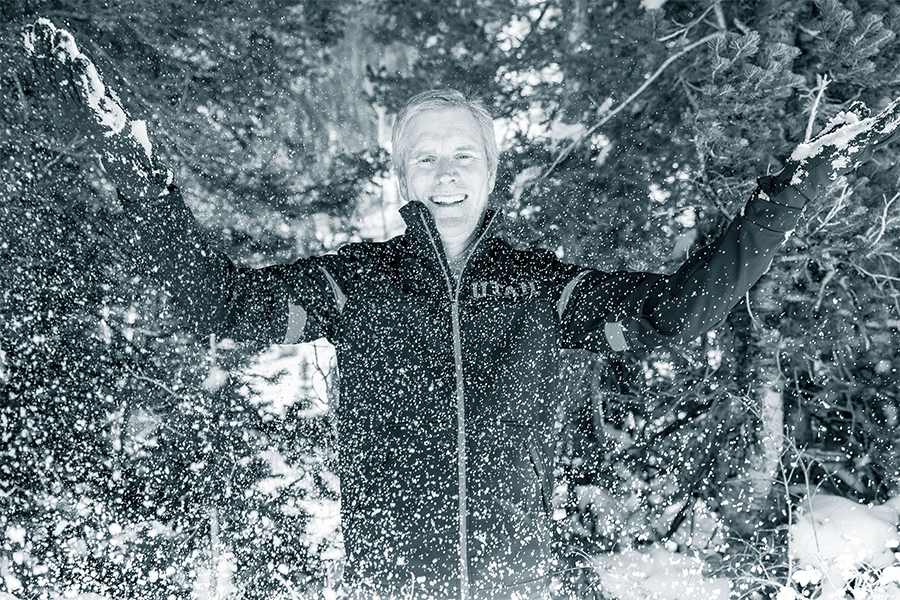Campus vignette: Why ‘greatest snow on earth’ isn’t just a catchy slogan
As the University of Utah winds down for winter break, many skiers and snowboarders eagerly check weather forecasts for signs of snow. The U, a 30-minute drive from seven world-class ski resorts, has long attracted snow lovers.
Utah, as the saying goes, has “the greatest snow on earth.” The memorable moniker was coined by Salt Lake Tribune Skiing Editor Tom Korologos in 1960 and subsequently adopted by the Utah Travel Council. It has appeared on everything from ski ads to license plates and was even the subject of a lawsuit brought by Ringling Bros. and Barnum & Bailey Circus (it lost).

A member of the University of Utah Alpine Ski Team competes in the 2024 National Collegiate Skiing Championship at the University of Colorado. (Photo courtesy of the University of Utah)
What makes our state’s snow so sublime? It’s a meteorological condition called “flotation.”
Utah can’t claim America’s highest average snowfall — that honor goes to Mount Rainier in Washington, which averages 671 inches each year and netted a record 1,140 inches of snow during its 1998-99 season. Alta Ski Area, Utah’s snowiest resort, churns out 548 inches on average and has a single season record of 903 inches. Utah does, however, boast some of the region’s driest snow (the average moisture content at Brian Head Resort is only 4%), while the Wasatch Range enjoys an enviable combination of geography, topography, climate, and weather, which causes lighter snow to fall on heavier snow.
If skiers and snowboarders don’t know what flotation means, they know how it feels. Flotation keeps skis and snowboards on the upper layer of snow without scraping the base.
“Only the subtlest movements are necessary as your skis glide effortlessly through the fluff,” OpenSnow forecaster Evan Thayer wrote in a piece for the Utah Office of Tourism. “The mountain, the snow, and gravity work in concert to give you an exhilarating feeling of flotation — total weightlessness. It’s a feeling so intoxicating — so freeing — that powderhounds such as myself devote their entire lives to experiencing it again and again."
Prime powder is the product of the “Goldilocks Effect,” a subject exhaustively studied by Jim Steenburgh, professor for the U’s Department of Atmospheric Sciences and author of the book “Secrets of the Greatest Snow in Earth” and the popular blog Wasatch Weather Weenies.

Jim Steenburgh, professor for the U's Department of Atmospheric Sciences, tosses a handful of the "greatest snow on earth." (Photo courtesy of the University of Utah)
The recipe for “just right” snow comes down to the right amount at the right time.
- Right amount: Too much snow means wading through drifts up to your waist and too little leads to “dust on crust” conditions that skiers detest.
- Right time: Utah’s frequent storms keep slopes nice and fresh. On average, Big and Little Cottonwood canyons received 3.73 inches of snow every day during the 2023-24 season.
“For me, the Goldilocks Storm is 12 to 18 inches of snow on a really nice, soft, settled base, and for it to be stacked right, it starts out with higher water content and gets drier over time. That’s what makes great powder skiing,” Steenburgh told Backcountry magazine.
Whether you’re called to the mountains when the snow flies or loathe every flake, it’s hard not to marvel at the magic of Utah powder.
Node 4
Our monthly newsletter includes news from UIT and other campus/ University of Utah Health IT organizations, features about UIT employees, IT governance news, and various announcements and updates.
